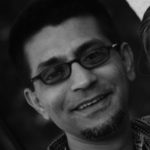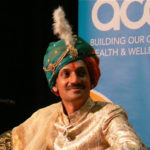A Four-part Journey Through South India in Search of LGBT Life
Also see:
Islam and Homosexuality
Gay India Stories
Gay India News & Reports 2000 to present
Gay India Photo Galleries
Introduction
Read this historic story first
The sheer size of India makes ‘a’ Gay India story an impossible task, and it’s not just size that matters; it’s also the intense complexity and patchwork of overlapping and diverse religions, discrete language dialects, gender divisions, class prescriptions and prohibitions, political fragmentation and fluid definitions of sexuality.
More than a few observers have said that India is a paradox: whatever can be said aloud deeper truths are unspoken; what is seen is unknown; it is packed with life, it is fraught with death; it surges with technology, it travels by ox cart.
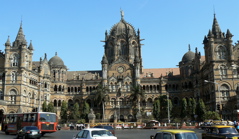 The same can be said about homosexuality: there is no scene and there is an extensive network; there is no gay life and there is much gay energy; gay people hide in shadows and they gather to celebrate their lives and protest in public rallies.
The same can be said about homosexuality: there is no scene and there is an extensive network; there is no gay life and there is much gay energy; gay people hide in shadows and they gather to celebrate their lives and protest in public rallies.
India is a country with a billion people on a triangular plate of land nearly 1800 miles in both directions fractured into 21 huge and widely different states each with dozens of million-plus citizens.
My trip this time took my husband and me to the southern half of India: Hyderabad, Chennai (Madras) Pondicherry, Cape Cormorin (Kanyukumari), the west coast tropics of Kerala state, Mysore, Bangalore, palms-and-beach Goa and finally Bombay (Mumbai). (A previous trip covered northern India.)
I did not intend to visit Delhi or Calcutta on this trip so there are no stories here about them although there are numerous LGBT/HIV organizations and agencies in these two cities; these agencies are listed in the links on this page.
Any thoughtful study or story of gay life in India cannot avoid interaction with HIV/AIDS and health organizations. Indeed, one leader pointed out that to find LGBT life in India is to knock on the dozens of doors of the agencies, organizations, groups, societies, charities, bureaus and trusts that have grown up in the past 15 years around the HIV epidemic.
As the disease has spread beyond the gay community to all populations, the backbone of the health work is still strengthened by the presence of countless dedicated LGBT people.
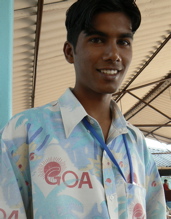 In this ‘story’ about gay India there are four stories: Bombay, Chennai (Madras), Hyderabad and Bangalore, each with a gay sub-culture that is to a greater or lesser degree entwined with HIV services. This story is dedicated to the many ‘saints in the streets’ who carry on this vital work.
In this ‘story’ about gay India there are four stories: Bombay, Chennai (Madras), Hyderabad and Bangalore, each with a gay sub-culture that is to a greater or lesser degree entwined with HIV services. This story is dedicated to the many ‘saints in the streets’ who carry on this vital work.
The most informative All-India network of organizations focused around sexuality and health issues is INFOSEM (India Network for Sexual Minorities). Anyone wanting an overview of the gay/health scene in India should start with their website.
Bombay
With about 20 million people living, squatting and working in the area, Bombay seems an unmanageable giant, an endless habitat of ugly old buildings, classic Raj architecture, sleek glass towers and miles of slums through which millions creep each day.
As in most of India, there is no overt gay community. Nevertheless, tucked into the dense social tapestry of the city are numerous individual faces, group voices and organized NGO’s who serve as distinct pieces of the larger web of modern gay life there. The task of finding them was made easier for me by Delhi-based Ashok Row Kavi, one of India’s leading activists and gay ‘godfather’ to many. I am grateful for his advice and generosity. (Ashok is currently based in Delhi where he works for UNAIDS.) During my stay I was fortunate to visit organizations, individuals, and a busload of queers out for a daylong trip.
(A) Humsafar Trust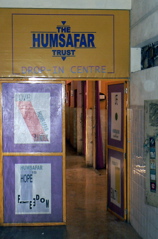
Being homosexual in India is a curse that is made easier or worse by the choices one makes to live in fear of it (being exposed) or build a life to include it.
If there is one underlying force behind Humsafar’s existence it is the latter, to acknowledge the truth of a person’s sexuality and surround it with support, acceptance and indeed celebration: it’s mission is to offer “a holistic approach to the rights and health of sexual minorities and promoting rational attitudes to sexuality.”
Founded in 1994 by Ashok Row Kavi and others as an informal social gathering of gays it soon became apparent, in the age of AIDS, that more than chat was needed to address the suffocating shadows and threatening health issues of a marginalized community—a community that extended well beyond the middle-class gays who first gathered to form Humsafar.
Humsafar is like a warm embrace. The offices–in Vakola suburb–may be worn and the building unsightly but the place is cheered up with colorful posters, gayly painted walls and the lively energy of staff and volunteers and clients. There was a feeling of belonging even before we entered the main meeting rooms as a smiling Girish Komar, an HIV counselor, met us going up the stairs. “Humsafar?” he asked, “this way, come” as he ushered us past a large blue and yellow sign over the front door that read ‘Humsafar Trust Drop-in Center’.
Inside everyone smiled softly—a big change from the harsh streets. It was immediate and easy to see that Humsafar is the virtual LGBT center for Bombay.
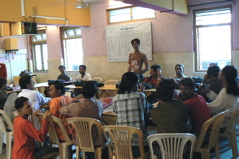 Humsafar offers a menu of a dozen different social, health, educational and organizational services that can be read on their website (http://www.humsafar.org/). It is listed and known as a health agency—which it is—but the obvious ‘core’ of its existence is the community of alternative sexualities (mostly gay-bi-trans men) it supports and employs in its staff and clientele (monthly salaries start at about $120). It’s client base includes any man who has sex with men (MSM) ranging from self-identified gay men, bisexuals, male-to-female transgender persons (hijras), lesbians and bisexual women.
Humsafar offers a menu of a dozen different social, health, educational and organizational services that can be read on their website (http://www.humsafar.org/). It is listed and known as a health agency—which it is—but the obvious ‘core’ of its existence is the community of alternative sexualities (mostly gay-bi-trans men) it supports and employs in its staff and clientele (monthly salaries start at about $120). It’s client base includes any man who has sex with men (MSM) ranging from self-identified gay men, bisexuals, male-to-female transgender persons (hijras), lesbians and bisexual women.
Despite it vast millions, beyond Humsafar there is no ‘street level’ openly LGBT organization identified as such. No identified ‘gay center’, no Pride events such as a festival or parade, no political lobbying organization, no religious associations, no bars, clubs, saunas, media (Bombay Dost was a magazine for the LGBT community but has ceased for now) and only a rare film such as the lesbian-themed ‘Fire’, which received threats of theatre burnings if it screened. A highly active online Yahoo group called GayBombay is an important facet of LGBT life here (more later).
Vivek Anand, Humsafar Director
Vivek Raj Anand is the CEO of Humsafar. A serious yet gently playful man in his forties he as been with Humsafar for 12 years as one of its founders. In his office, decorated with notices, posters and a colorful soothing aquarium, he deals with everything about Humsafar—politics, finances and fund-raising, project management, baby-sitting (“you can’t imagine what it’s like to deal with a 180 queens—my life is drama” he laughed), consulting with other organizations, advising donors, confronting critics, soothing lost souls…all while toking on an occasional cigarette.
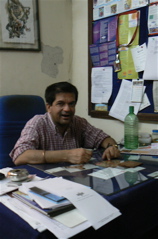 In addition to monitoring the beehive of activity within the offices (there are three branches in Bombay) Vivek attends to the outreach to untold thousands of isolated sex workers and closeted MSMs (men who have sex with men)
In addition to monitoring the beehive of activity within the offices (there are three branches in Bombay) Vivek attends to the outreach to untold thousands of isolated sex workers and closeted MSMs (men who have sex with men)
Making actual contacts with the real and potential ‘victims’ of HIV disease and the discrimination linked to it remains daunting. Even with sufficient funding from numerous sources and despite thousands of face-to-face contacts a month through Humsafar’s well-trained gay staff there are thousands more who avoid contact or are hidden from view among illiterate, socially isolated or closeted people in denial. (40% of India’s population is under 18, unmarried and at risk for secret unsafe sex).
The government has become more of an ally in the past five years as it recognizes the scope of the health problem; it is currently setting up hundreds of local programs across the country to reach the highest risk populations: MSM, IV drug users and male and female sex workers. India offers free basic HIV treatment and medications.
(Despite the hoopla and publicity millions of dollars donated to India for HIV work from the Gates Foundation, there have been organizational problems interfacing Gates agendas with pre-existing local community-based organizations. Big money sometimes hinders rather than helps effective grass roots programs, said Vivek.)
None of these, however, include any aspect of human rights let alone gay rights. Humsafar’s mission does not focus on gay rights despite an occasional rally. “Our focus has to be health or we won’t get the cooperation we need,” said Vivek. “The government will not talk about rights.” 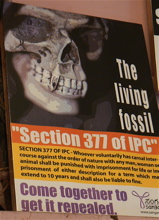
Article 377 of the 1860 Raj (British) criminal code still criminalizes homosexuality although rarely enforced (bribes to police are the more common punishment). (See India News & Reports 2006 on this site for a UN report about Article 377 and its interference with HIV policies (India News)
Then there is the challenge of reaching out to married gay men and lesbian women. Most lesbians are deeply closeted—usually within marriage—and do not want to expose themselves, even to Humsafar staff. On occasion Vivek will arrange a meeting for some of them at the office but only after all the male staff have gone home.
As India’s society slowly changes to incorporate an expanding secular commercial population more women (middle and upper class) are pursuing professional careers instead getting marrie. Vivek estimated that about half the lesbians he sees at Humsafar are married and half are working women.
Married gay men also shy away from Humsafar gatherings since they do not want to be seen with other gays who are more open; they see going to Humsafar as coming out too far.
To make things more layered, Vivek described a class of ‘elite’ call boys and prostitutes (gay and straight) who service men and women who don’t mix with Humsafar and have their own closed circuits of friends. Some of these are boy-toys of famous or wealthy people who keep their private lives very removed from public view. To reach them Humsafar had to set up a separate discreet clinic.
Vivek told of a gay ‘wedding’ that took place at the clinic recently between two high rollers. He added there are many middle class gays who are not governed by class prejudice and enjoy the mixers at Humsafar since they can relax their masks and be silly or even cross dress if they like.
Sujit —a Married Gay Man
As in other cities across billion-plus India, personal lives are in the grip of a ‘religious culture’ (mostly Hindu, but also with strong Muslim and Christian influences) wrapped around intense heterosexual family traditions that prescribe life from birth to death, within each caste, with little variation and no place for same-gender love or sexual activity.
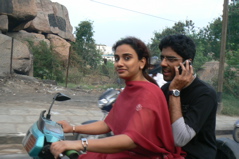 Out of this straight-jacket mold emerged 33 year-old Sujit one evening when we met at a polished restaurant in the Santacruz section of suburban Bombay. Away from the din of the street and serviced by uniformed waiters and formal tableware we talked about his public and secret lives.
Out of this straight-jacket mold emerged 33 year-old Sujit one evening when we met at a polished restaurant in the Santacruz section of suburban Bombay. Away from the din of the street and serviced by uniformed waiters and formal tableware we talked about his public and secret lives.
He acknowledged he was gay as early as ten years old and had numerous sexual experiences in school and college. When he was 17 he met a friend who became his lover for 13 years. But the longevity was not intended as a commitment; both understood they would separate and marry at some future point.
That point came at the age of 30 when he (and his father) went online to shaadi.com, a Hindu marriage shopping site, to search for a bride. A suitable woman—of the same Maharastra Brahmin cast–was found and the marriage ‘arranged’ with mutual consent of all. Fortunately, he and his wife felt a sincere liking for one another and for each other’s parents. Today after three years of marriage they have two children and continue living, as is customary, with his parents.
All six of them share a two bedroom apartment in a suburb of Bombay, about an hour away from his work in a bank. He holds a modern view that his wife is his co-equal in the family and shares authority for decisions and child caring: “I don’t feel I have to show any power over her. We decide things together.” His wife also works–in an insurance agency as a sales representative.
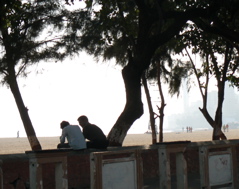 “ We are two hearts who care very much for each other. My heterosexuality covers my homosexuality,” he reflected. “There are many men like me who manage their secrets quietly. I accept the traditions of my family and culture and don’t want to live as a gay man—it would be too difficult for everyone. I don’t feel false or that I’m living a lie. I don’t fully repress myself…there is room for both but one is more important.” Sujit seemed calm and comfortable with his married life.
“ We are two hearts who care very much for each other. My heterosexuality covers my homosexuality,” he reflected. “There are many men like me who manage their secrets quietly. I accept the traditions of my family and culture and don’t want to live as a gay man—it would be too difficult for everyone. I don’t feel false or that I’m living a lie. I don’t fully repress myself…there is room for both but one is more important.” Sujit seemed calm and comfortable with his married life.
Contrary to general opinion about anguished and stressed married gay men, he was appeared at ease and loving toward his wife and children and in-laws. The two families see each other regularly to share food and companionship.
He claims his desire for same-sex contact is only expressed two or three times a year—usually with other gay married men whom he knows–with no apparent frustrated desire in between. Otherwise he does not cruise men but has been to an occasional GayBombay Yahoo Group social event where he has made some friends and acquaintances who help to minimize any feelings of isolation he might have.
As a serious hobby he practices classical dance under the tutelage of a well known master teacher and gives performances at various festivals and ceremonies.
‘Outsider’ Risk Group
Men like Sujit worry health officials as a ‘bridge’ population for transmitting HIV to women. It’s estimated at least 50% of gay men in India are married which implies a lot of sexual mixing between the high-risk MSM and low-risk married female population; it’s a serious concern since married gay men are reluctant to access health services from gay-staffed HIV/AIDS organizations such as Humsafar. Many closeted gay and bi men also fear that attending Humsafar or other agency events means coming out, despite all assurance of confidentiality.
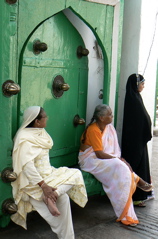 Sujit assured me his contacts were safe; he is very aware not just of the health threat but the enormous social risk he takes if he transmits any disease to his wife. Such an event would bring a huge disruption of the status quo arrangement that has settled comfortably on all three generations in his family.
Sujit assured me his contacts were safe; he is very aware not just of the health threat but the enormous social risk he takes if he transmits any disease to his wife. Such an event would bring a huge disruption of the status quo arrangement that has settled comfortably on all three generations in his family.
Another risk faced by married gays–indeed any MSM–if caught by the police in compromising situations is not so much arrest but blackmail. Low pay and a tradition of corruption in the public sector are more likely to result in a single payoff (5000-10,000 rupees–$100-$1000) to the officers or, worse, continued payouts over time.
I asked Sujit about married lesbians and he nodded with a knowing yet resigned acknowledgment: “ yes, I think most lesbians are married. It is hard enough for men to live unmarried but it is more difficult for women. They would be seen as defective or incomplete if they did not marry… something wrong with them. So they also have their secret friendships, like the men. Fortunately it’s easy to be affectionate in my country without hiding; we like to touch each other so it’s easy to hide one’s feelings but it hurts to hide one’s truth.”
GayBombay Yahoo Group
It’s a running joke that Voodoo Pub in Colaba district (Bombay) is said to be the only gay bar between Istanbul and Bangkok! It is pretty much gay on Saturdays. But once you leave the place there is no place to go to meet ‘nic’ guys’–except online.
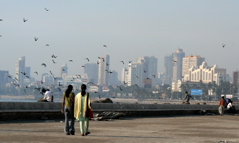 Not surprising, India is very wired—at least among the merchant, academic, business and professional population with their jobs in IT, hi-tech manufacturing, retail, banking, education and similar enterprise. So it was inevitable that momentum would create online gay chat/dating sites and groups.
Not surprising, India is very wired—at least among the merchant, academic, business and professional population with their jobs in IT, hi-tech manufacturing, retail, banking, education and similar enterprise. So it was inevitable that momentum would create online gay chat/dating sites and groups.
The most successful, since 1998, is GayBombay Yahoo group (www.gaybombay.org). With over 4000 current list members it is the main lifeline of gay life in Bombay–and beyond, with members all over the country. Moderated by volunteers it holds weekly meetings for support, networking and social events.
Online, in the group, there are daily serious and intense conversations along with catty gossip. There is always talk of the next meeting place and the opinions that follow. On a recent day there was virtual conversation about the pros and cons of paying for sex and the ‘rules’ for hiring guys “using precise scientific principles, consumer savvy and finely honed instincts…but but when enslaved to hormones and fantasy I frequently break my own rules!”
Another more poignant topic concerned depression (a not uncommon topic): “u said u r loosing ur self confidence and feeling like in trouble, so i thought i could be of some help. Just remember one important thing; disappointments and depressions are part and parcel of human life”, no matter u r straight or gay, male or female, young or old..”.
This writer and my partner were invited to attend an all-day outing organized by GayBombay (known as GB) at a mountain resort in the hills a couple of hours east of Bombay. Most meetings are held locally but occasionally an out of town site is selected.
GB Trip to Lonavla on the Red Bus
Fifty courageous middle-class GB boys braved the highways of early Sunday morning to wend their way to the Lonavla resort accompanied by five white queens from abroad. Aboard the fun bus companions, lovers, acquaintances, new members, elders and teens became a family for the day–chosen family who unconditionally supported and accepted one another as gay beings.
Chaperoned by GB members Anand and Umang and Yosef (et .al.), we arrived about 9 AM to find some hets already at the resort having stayed over the night before, so the morning was not completely ‘free’ to be open. But the facilities were large enough to accommodate separate groups and we took turns at the tasty buffet and cold pool performing rain dances in the fountain spray. 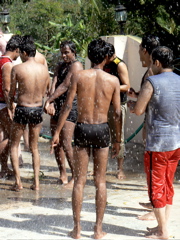
Clearly the hets (male only, women watched as usual) were less appealing as their corpulent bodies jiggled and wobbled in their baggy shorts in the water. Later it was our turn and we looked much more svelte and stylish in our briefer costumes and more trendy dance styles.
Two separate group ‘sessions’ spontaneously happened, the first of which was a groups chat to answer questions about GB that newcomers regarding the purpose and activities of GB…”to offer a space where you can be your true self and take off the mask…to offer safe non-sexual social support…to allow you to see that we are each different and yet the same, all deserving respect and (my own observation) to show that good. stable and loving long term relationships are possible and real.” Among the 50 men present there were at least half a dozen couples ranging from 6 months to 17 years together.
One young man, with no family, at first doubted if he should attend because he had no one to bring but was quickly assured by Umang that he would have plenty of company. By the end of the day he had begun to create new family. (He told me a few days later that another member had invited him to come home and stay overnight, which he happily did.)
In addition to feasting, splashing and laughing and talking there was a playful and humorous ‘flesh auction’ to raise some funds for GB. Laughing through the game, five guys were chosen to be auctioned off each to a high bidder resulting in a couple of thousand rupees into the GB coffers. Many of the jokes and catcalls were in Hindi to the delight of all save the five whites boys present: three from USA, one from Taiwan and one from Japan. But laughter is contagious and everyone laughed and applauded.
Then it was back to the pool and more food. By this time the hets had drifted home and GB had the place to themselves for a while before sunset. On the way home we stopped in the town close to Lonavla to buy chikki sweets and fudge.
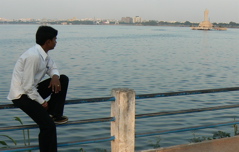 The long mountain road brought the group back into smog city and to the individual realities each has in the world, managing their identities, professions, relationships and families in their own fashion to create a sensible gay life. As one man said, nodding his head toward the GB group, “a good gay life is possible here in Bombay if you plan and arrange your life carefully.”
The long mountain road brought the group back into smog city and to the individual realities each has in the world, managing their identities, professions, relationships and families in their own fashion to create a sensible gay life. As one man said, nodding his head toward the GB group, “a good gay life is possible here in Bombay if you plan and arrange your life carefully.”
Note: This and the other 3 stories posted about gay India 2006 describe numerous organizations with which many LGBT folks are associated. As a consequence the stories do not portray much about personal lives and feelings as they are experienced on a daily basis. For more intimate insights about the ‘inner’ lives of LGBT people I suggest the following sites: Movenpick: http://www.orinam.org/comingout.html and Gay Bombay Yahoo Group: www.gaybombay.org.
by Richard Ammon,
GlobalGayz.com
Updated 2013

